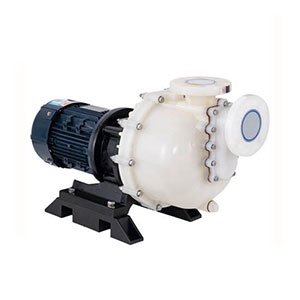Self Priming Pump Troubleshooting
The self priming pump, a common centrifugal pump with the ability to automatically draw in and pump liquids within its body, finds extensive applications in industrial, agricultural, and residential settings. However, like any equipment, self priming pumps may encounter issues during operation. In this article, ATO Industrial Automation explores common malfunctions and provides solutions.
Unable to Self-Prime
The inability of a self priming pump to initiate self priming is a common malfunction that requires appropriate troubleshooting. There are various reasons for this issue, such as air leaks in the inlet pipeline, blockages in the inlet pipeline, and inadequate internal sealing of the pump body. To address this problem, the following methods can be employed:
- Check for air leaks in the inlet pipeline; if identified, perform sealing procedures.
- Inspect the inlet pipeline for blockages; if obstructed, initiate a cleaning process.
- Examine the internal sealing of the pump body; if found inadequate, replace the sealing components.
Unable to Operate Properly
Another prevalent malfunction is the self priming pump's failure to operate correctly. The causes for this issue are diverse and may include faulty power supply lines, damaged motors, and malfunctioning mechanical seals. To resolve this type of fault, the following methods can be applied:
- Check the power supply lines for any abnormalities; if found, conduct necessary repairs.
- Examine the condition of the motor; if damaged, replace the motor.
- Inspect the functionality of the mechanical seal; if ineffective, replace the mechanical seal components.
Unusual Noises
The occurrence of unusual noises in a self priming pump is a more serious malfunction that requires prompt attention. There are various reasons for this issue, such as damaged bearings, loose impellers, and foreign objects inside the pump body. To address this fault, the following methods can be employed:
- Inspect whether the bearings are damaged; if so, replace them.
- Check for impeller looseness; if the impeller is loose, re-fix it securely.
- Examine the pump body for the presence of foreign objects; if found, remove them.
Insufficient Flow
Insufficient flow in a self priming pump is also a common malfunction that requires appropriate measures. There are various causes for this issue, including impeller wear, blockages in the inlet pipeline, and insufficient inlet pressure. To address this fault, the following methods can be employed:
- Check for impeller wear; if the impeller is worn, replace it.
- Inspect the inlet pipeline for blockages; if obstructed, initiate a cleaning process.
- Verify if the inlet pressure is adequate; increase it if insufficient.
Water Leakage
Water leakage in a self priming pump is a common issue that requires timely resolution. There are various causes for this fault, including aging seals, pump body fractures, and loose connections in the pipeline. To address this issue, the following methods can be employed:
- Check for aging seals; if seals are aged, replace them.
- Inspect the pump body for fractures; if fractured, replace the pump body.
- Check for loose connections in the pipeline; if found, secure them.
Difficult Startup
Difficulty starting the self priming pump is another common malfunction that requires appropriate measures. There are various reasons for this issue, including incorrect motor rotation, blockages in the pump inlet, and insufficient inlet pressure. To address this fault, the following methods can be employed:
- Check if the motor rotation is correct; if incorrect, replace the motor.
- Inspect the pump inlet for blockages; if obstructed, initiate a cleaning process.
- Verify if the inlet pressure is adequate; increase it if insufficient.
Self priming pumps play a crucial role in various industries, yet malfunctions can disrupt production and daily life. This article addressed six common issues with self priming pumps, providing specific solutions for each. We hope this information proves helpful to users, ensuring smoother operations in both production and daily activities.

